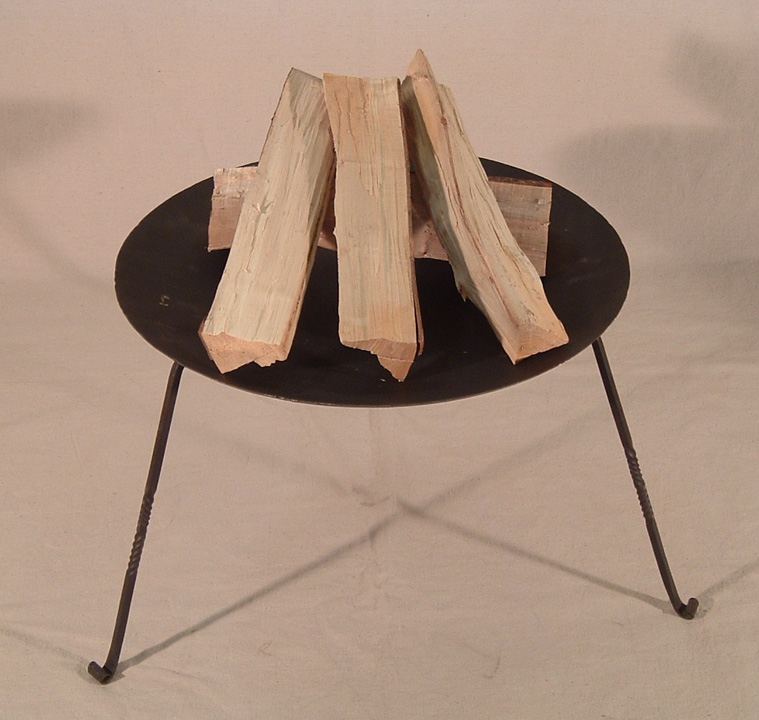This commentary is written by my old friend (and fellow cynic) Bruce Blackistone. Bruce is one of the pillars of the Longship Company, and a long experienced (and excellent) historic re-enactor. I always find his comments insightful and backed up by both practical work and solid research.
Early Medieval Structures; Four Rules:Content in quote copyright Bruce Blackistone © 2010
First Rule: The larger the structure, the more important are organizational and people skills.
Sometimes, getting something built is the easy part; forming the organization to build, maintain and use the structure is the hard part. The world is littered with grand projects that are just started, or half built; and then money, or enthusiasm, or time allowances wane; and it stalls, and it stops, and it never happens. Certain other projects are breathtakingly successful, especially those sponsored by governments or museums. The one universal is organizational and people skills, either self-imposed or external. You need a framework to handle dissent, and to adapt to mission change, and a clear vision of what you hope to accomplish and where you want to go from there. Is the project for you, or the community? Is it for teaching and learning? Is it just a "cool place" for your friends to hang out? (In the later case, how dedicated are your friends to creating this place?) How much time, treasure and labor do you plan to put into it, and where is it coming from? Are you willing to employ (small "p") politics to marshal the resources to accomplish the project, and to keep it going once completed?
Second Rule: Smaller is better.
Do your research, and look for the smallest historic example that will accomplish your mission. If you outgrow that (a common settlement pattern), then move up to something grander. If you're doing this solo, a snug shepherd's sheiling of very modest size is far better than a one-eighth-completed longhall with no roof.
Two people can accomplish far more than one; and three or more is good if they don't spend all their time talking to each other about how cool it is going to be. But will you get six friends for the first weekend, and two for the second, and fly solo for the rest of the project? Reducing the scale gives you a fighting chance of completing the process unless you are prepared to throw buckets of money at it and treat is as a modern construction projects with modern equipment and techniques and hired labor. In that case, you should still study all of the considerations, above, to outline your scope and plans; even a large budget is still a budget, and needs to allow for contingencies.
Third Rule: We are the infrastructure; everything else is just entropy in action.
About 25 years ago I started on a small sheiling as an experiment, a simple A-frame grubenhaus, known to friends and family as "the hovel". It was about 10' X 15' and had post and beam construction, wattle and daub walls (I saved hair from haircuts, and burned oyster shell for lime for plastering) and a thatched roof. It was on our farm within half a mile of the house and between the house and the landing. The day it was finished, it was fun. I made repairs about a season later, then more repairs and changes, and enlisted friends and Boy Scouts for the thatching parties. I didn't live there, and my friends camped out from time to time, and my free time went more and more to the longship and the forge and the farm. Today, it is an "authentic" study in archeological decay, a large cavity imposed upon by groundhogs, with a few weathered beams hither and thither. If you lived in the structure, maintenance would be a constant necessity; but it's is constant whether you live there or not.
Fourth Rule: No roof, no house.
When the Virginia and Maryland tidewater was first settled by the English, they built traditional English structures: post and beam, wattle and daub, thatched roofs. Within a generation they had switched to all wooden structures; both because of the abundance of forest in the New World, and because the traditional building techniques were unsuited to our warm, high-humidity, semi-tropical alternating with sub-arctic climate. My thatching "went away" in record good time. Daub eroded rapidly without a roof. Even a small structure takes a lot of thatch to get it thick enough to provide actual shelter; and, depending upon climate and other local conditions, it rots or bugs eat it or it weathers rapidly and you need to renew it. It may last for 40 years in England, but it doesn't hold up in the tidewater. (Thatch replacement is a regular budget item for Jamestown Settlement in Virginia.)
Whatever roof you choose, thatch or shingle or shiplap (one example known from the Viking Age, although still debated as to whether it's part of a ship, or just built by a shipwright), you need to think it out and balance authenticity and maintenance needs. A roof without walls is of some use, but walls without a roof are nearly useless for a dwelling.
If regular readers are wondering why I have been poaching pieces by other people of late?
I'm trying to get a new metal roof over the residence here at Wareham, working through fall rains and winds (and hoping to beat the first snow, due in a week or two).




































